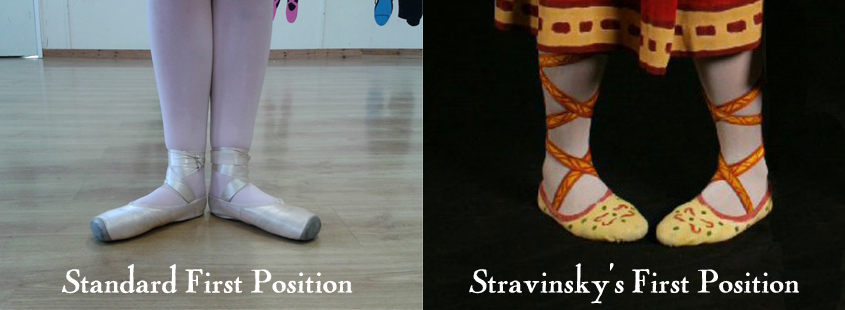
Is it possible for art to be unjust? In this installment of our “Whatever” series on aesthetics (drawing from Philippians 4:8), I discuss how to make just art. Because we can’t just make art. We need to make just art. (Groan.) But what does it mean for art to be just or—as most translators put it—right?
The word “right” (δίκαιος dikaios) used in Philippians 4:8 is mostly translated “righteous” or “just” in the rest of the Scriptures, and it indicates guiltlessness or innocence. For our purposes, the phrase refers to art that defends and promotes God’s legal perspective. The first and most obvious denotation of law-keeping would be that just art does not break, or encourage breaking, any of God’s Law(s). But the criterion drives deeper than that.
Autonomy and Antinomy
Most human works in rebellion against God will travel to the right or the left of God’s law into either self-righteousness (autonomy) or libertinism (antinomy). Autonomous man desires to be a law unto himself, whereas antinomous man aims to deny all law. In both cases, men in rebellion against God attempt to escape from under the Law of God.
This implies that all men inherently understand that they are guilty in some sense (Rom. 1:18f). God has cleared the guilty record of Christians, however, so we are free to obey God’s Law without viewing it through the resentful spectacles of either autonomy or antinomy.
Most rebels congratulate themselves for rejecting the falsehoods of their fathers, but fail to realize they have merely exchanged their father’s lie for a repackaged version of their grandfather’s.
In history, one can trace the pendular swings of artistic endeavor from autonomous art to antinomous, then back again and again in an ever widening succession. There are obviously particular exceptions to the general rule that art (and philosophy and politics) swing from antinomy to autonomy, but the trend is pretty clear from a cursory look at the past few centuries of intellectual movements:
- Post-Modernism (antinomy)
- Modernism (autonomy)
- Romanticism (antinomy)
- The Enlightenment (autonomy)
- The Renaissance (antinomy)
Since neither autonomous nor antinomous art can satisfy all the needs for which men pursue beauty, their fruitless futility inevitably emerges over time, yet, like dogs returning to their vomit, rebel artists turn from the indigestion of one failed error to consume other errors. Thus, most rebels congratulate themselves for rejecting the falsehoods of their fathers, but fail to realize they have merely exchanged their father’s lie for a repackaged version of their grandfather’s.
Consider Stravinsky’s The Rite of Spring. The purpose of this work can be more clearly seen when one sees the ballet that accompanied it. In this ballet, the dancers hold a first position that exactly opposes the then established (and still current) conventions of ballet. The dancers turned their feet inward rather than outward; they hunched their shoulders and hopped about inelegantly on both feet. The music also displays this rebellion against man-made conventions.

But who originated these conventions, and for what purpose? At some point, one of Stravinsky’s artistic forebears established some rules in an attempt to “civilize” dancing. Stravinsky, as is clear from his obsession with the primal, wanted to return to the time before civilization corrupted the pure energy of dance. He regurgitates a “noble savage” ideal, with a twist. He establishes a new convention that regurgitates his grandfather’s lie. The Rite of Spring is both a criticism (almost parody) of Romanticism and a resuscitation of Locke and Rousseau.
In the end, the autonomous artist doesn’t care which lie he holds, as long as he doesn’t have to turn to God. The autonomous artists doesn’t aim merely to establish the primacy of his own conventions over the dictates of other men—ultimately, he wants to replace even God’s Law with his own. Like the rulers of Psalm 2, he really believes he can release himself from God’s bonds of reality.1
Our Culture is More Antinomous Than Autonomous
Recently, our generation has preferred antinomy over autonomy. Having seen the havoc caused by man’s attempts to establish his own conventions, our generation has learned to distrust conventions altogether. Antinomous art does not attempt to establish a different convention for art, but rather to destroy the validity of having conventions at all by demonstrating the ultimate arbitrariness of conventions. The products of antinomy attempt to deny an absolute God, though they may seem harmless with their self-effacing humor, prattling triviality, obsession with style, and wry self-referentiality.
It is often hard to distinguish between the effects of autonomy and antinomy, and many people consider Stravinsky to be just as easily antinomous as autonomous. This has some truth to it since both drives are present in every rebellious man, but the zeitgeist of the Modern period is different than that of the Post-Modern one. Consider the rampant fascism that manifested itself all over the world directly following the acceptance of the Modernist paradigm, as well as the disintegration of the “rule of law” that has attended Post-Modernism’s ascendancy. Fascism follows autonomy as assuredly as anarchy hounds antinomy. These earmarks can help us to distinguish the ages and “understand our times.”
One should also keep in mind that antinomous art sometimes clears the way for autonomous art by discrediting the currently established conventions. The first stage of any construction project involves demolition, and many artists that went on to establish their own “autonomous” schools of thought (e.g., Picasso, Stravinsky) started by critiquing the artistic conventions of their generation.
Fascism follows autonomy as assuredly as anarchy hounds antinomy.
If the historical philosophical pendulum swing holds true, I predict that very soon we will have a new breed of autonomous art that differs only slightly from its predecessors as man spins ever more wildly into wider circles of deception to escape, if at all possible, the ever-tightening grip of God’s hand.2
Art with an arbitrary foundation is beset by challenges to its authority and is overthrown. Art that overthrows arbitrary authority must either establish an arbitrary authority of its own or deny all authority. If it denies all authority and condemns conventions as arbitrary, it eventually disintegrates itself into what can metaphorically be called mud—brown mud. Without distinctions of any kind, little else than madness or the incoherent representation of chaos can ensue.
Just as a train may move in new territory when it abandons its rails, autonomous or antinomous art can sometimes have a dazzling semblance of innovative freshness, but in the end, both the train and the art bog down in the futility of their respective follies.
Discernment vs. Transgression
If you’ve been paying attention, you’ll notice that one of the main power sources of unbelieving art is transgression. But transgression gets really boring without law. You can think about this in terms of vandalism. It’s way more effective to vandalize something clean and well-kept. Transgression in an immoral society has no real artistic value. For example, Madonna got far more traction from transgression than Miley Cyrus has. Because artistic and moral conventions were much better maintained (and far more traditional) in the last generation than they have become in my generation (in some part thanks to Madonna). But the lawless artist really has no tool but transgression to achieve the most blessed virtue of unbelieving art: novelty.3
Transgression in an immoral society has no real artistic value. For example, Madonna got far more traction from transgression than Miley Cyrus has.
If we are to meditate on what is right, we should not meditate on those things that derive their interest from a rebellious obsession with the destruction of conventions or the distortion and corruption of reality. However, one can take this advice to an extreme.
I do not mean that just art cannot or should not be controversial. In fact, it should even rebel against the Christ-opposing world order. I also do not mean that just art cannot contain an accurate description of wickedness for the purpose of exposing it, or that it cannot contain distortion, dissonance, swing, or unresolved tension. Instead, Christians should discern the context and consequences to determine if a given work is attempting to subvert God’s Law and righteousness, and shun such work if it is, no matter how clever it may seem.4
On the other hand, according to the Jeremiah mandate, destruction, deconstruction, uprooting, and overthrowing play a large part in prophetic works of just art (Jer. 1:10). One should not automatically assume that a controversial or deconstructive work is therefore lawless. The question is whether it is deconstructing or subverting the truth, or whether it exercises these tools of criticism to undermine and overthrow falsehood.
In the end, Christians are not to determine our values, our style, or our taste either by rejecting or adopting the conventions of men. “The fear of man brings a snare” (Prov. 29:25). Thank God that we are set free by the truth (Jn. 8:32)!
Tune in next time, when we talk about “Whatever is Pure.” And if you missed the first two in this series, check out “Whatever is True” and “Whatever is Honorable.”
- Why are the nations in an uproar,
and the peoples devising a vain thing?
The kings of the earth take their stand,
and the rulers take counsel together
against the Lord and against His Anointed:
“Let us tear their fetters apart,
And cast away their cords from us!”
He who sits in the heavens laughs,
the Lord scoffs at them. (Ps. 2:1–6) ↩ - We can already see the political fruit of this pendulum swing in the increasing consolidation of power in the State around the world (e.g., the EU). I predict that global art will soon follow this trend and return to the veneration of formalism and received conventions. ↩
- In contrast to this, the righteous artist really shouldn’t care much about novelty, and his main tool for art is discernment, not transgression. But that’s a topic for another post. ↩
- Sometimes a work of art may deconstruct human conventions without crossing the line into “unrighteousness.” I would be wary of this work, though. God’s servant is not quarrelsome, and human amoral conventions agreed upon by a community often have more valid justification in reality than may be readily apparent upon initial consideration. Though a man at war with men may be just (e.g., Athanasius), a man who is at war with God will also be at war with men, so a lack of peaceableness with men may be an indication of lawlessness. ↩

